Audi e-tron GT battery
The lithium-ion battery system of the Audi e-tron GT quattro and the RS e-tron GT can store 83,7 kWh of energy net (93,400 kWh gross).
It integrates 33 cell modules, each of which comprises 12 pouch cells with flexible outer skin. Each module is fitted with its own computer that monitors the temperature and voltage. The unusually high system voltage of approx. 800 volts enables a powerful continuous output and shortens the charging duration; in addition, it reduces the weight of, and space required by, the wiring.
The battery system is located beneath the passenger compartment, at the lowest point of the car. This, in combination with the electric motors, provides a low center of gravity appropriate for a sports car and a weight distribution between the front and rear axles that is very close to the ideal value of 50:50.
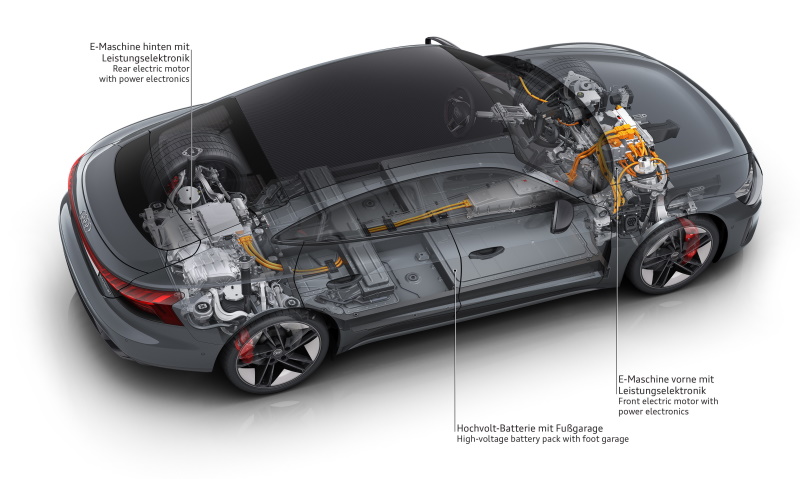
Battery with foot garage for rear passengers
Thirty modules form the lower level of the battery that features a wide recess in the rear section. It creates space for the rear passengers’ feet, which allows them to sit in a low position and also enables the flat vehicle silhouette. The upper “floor” contains three further modules situated below the rear seats. The connections, fuses, and the main control unit are located under the console of the center tunnel. The bottom of the battery is protected by an aluminium plate.
Cell technology
The cell used is LG Chem E66A. The cell type is LG Pouch Cell produced in Poland.
| Spec | Value |
|---|---|
| Nominal Capacity | 64.6 Ah |
| Minimum Capacity | 63,5 Ah |
| Nominal Voltage | 3,651515 V |
| Nominal energy | 235,888 Wh |
| Minimum energy | 232,2 Wh |
| Thickness | 11,7 mm |
| Width | 104 mm |
| Height | 350 mm |
| Volume | 0,425880 |
| Weight | 897 g |
| Volumetric Energy Density | 648 Wh/L |
| Gravimetric Energy Density | 263 Wh/kg |
| Chemistry | NCM 712 |
Battery pack capacity
The confiugration of the battery cells are 198s2p, meaning there is two and two cells in paralell with 198 pairs in serial.
Audi/Porsche rates the capacity to each cell to 64.6Ah or 129.2Ah per cell pair.
The nominal voltage is 198 * 3.65151515 = 723 Volt.
723 volt * 129.2Ah gives = 93400Wh or 93.4kWh as stated.
Fully charged it cell 4.217 Volt in total 835Voltage. Empty each cell has 3.08 volt giving in a pack voltage on 610 Volt.
Total battery weight is 630 kg (1389 pound).
Each module weighs aprox 13kg.
Max charging speed is 270kW.
Battery housing
The waterproof housing is a sandwich construction consisting of a cover at the top and a bulkhead plate at the bottom. The truss-design battery frame with multiple subdivisions is mounted in between. The cooling elements are glued on underneath the bulkhead plate.
The battery housing is secured by means of a steel protective plate. For the battery frame, the developers opted for a lightweight aluminium design. On the one hand, this provides a lot of installation space for the cell modules - and consequently a high battery capacity. On the other hand, this has made it possible for the vehicle weight to be kept low. Modern joining techniques are used such as MIG welding (metal welding with inert gases) on the battery frame, laser welding on the bulkhead and protection plates and heat-conducting adhesive on the line system under the battery (see below).
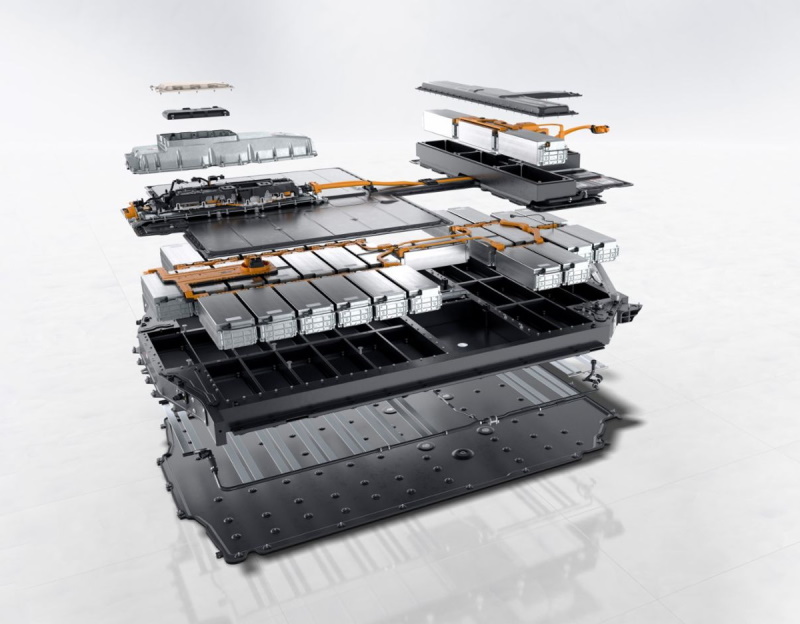
Audi e-tron GT battery pack
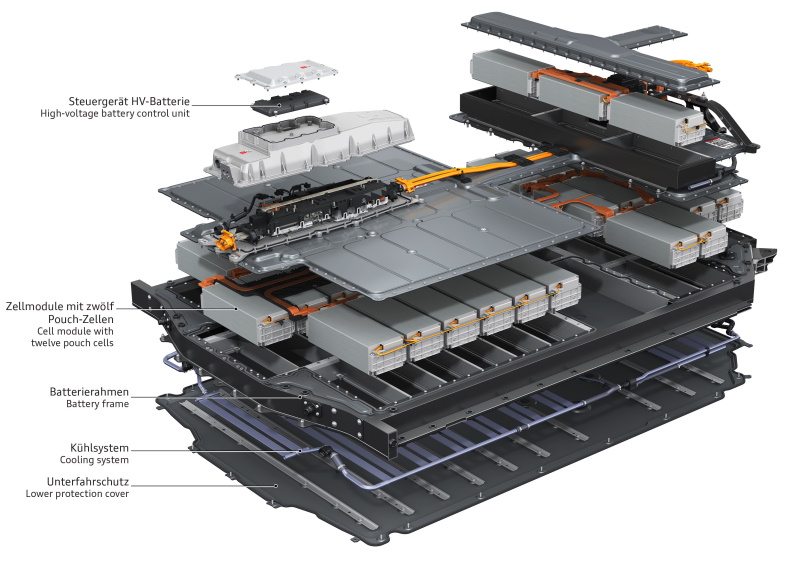
Audi e-tron GT battery pack
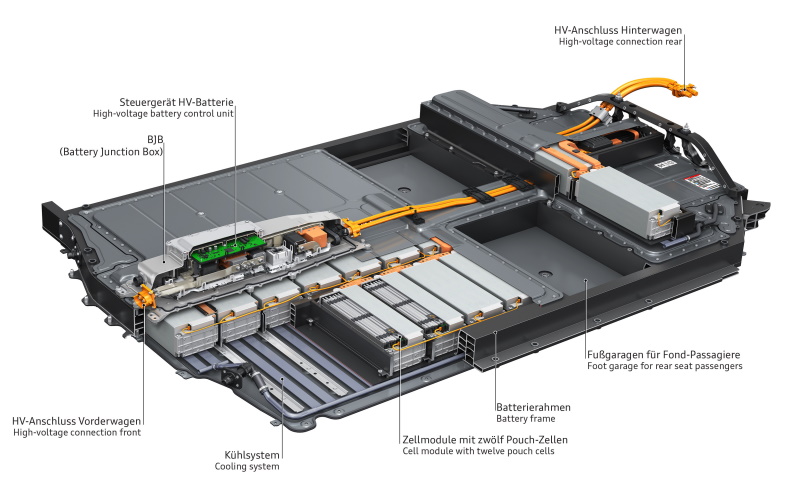
Audi e-tron GT battery pack
Thermal managment
Beneath the cell space of the battery, there is a compound structure of flat extruded sections through which a glycol/water mixture flows that circulates in its own low-temperature circuit. The temperature is transferred between the cooling plates and the cell space via a heat-conducting paste. The battery’s feel-good temperature is between 30 and 35 degrees Celsius, and its operating range extends from minus 30 to plus 50 degrees.
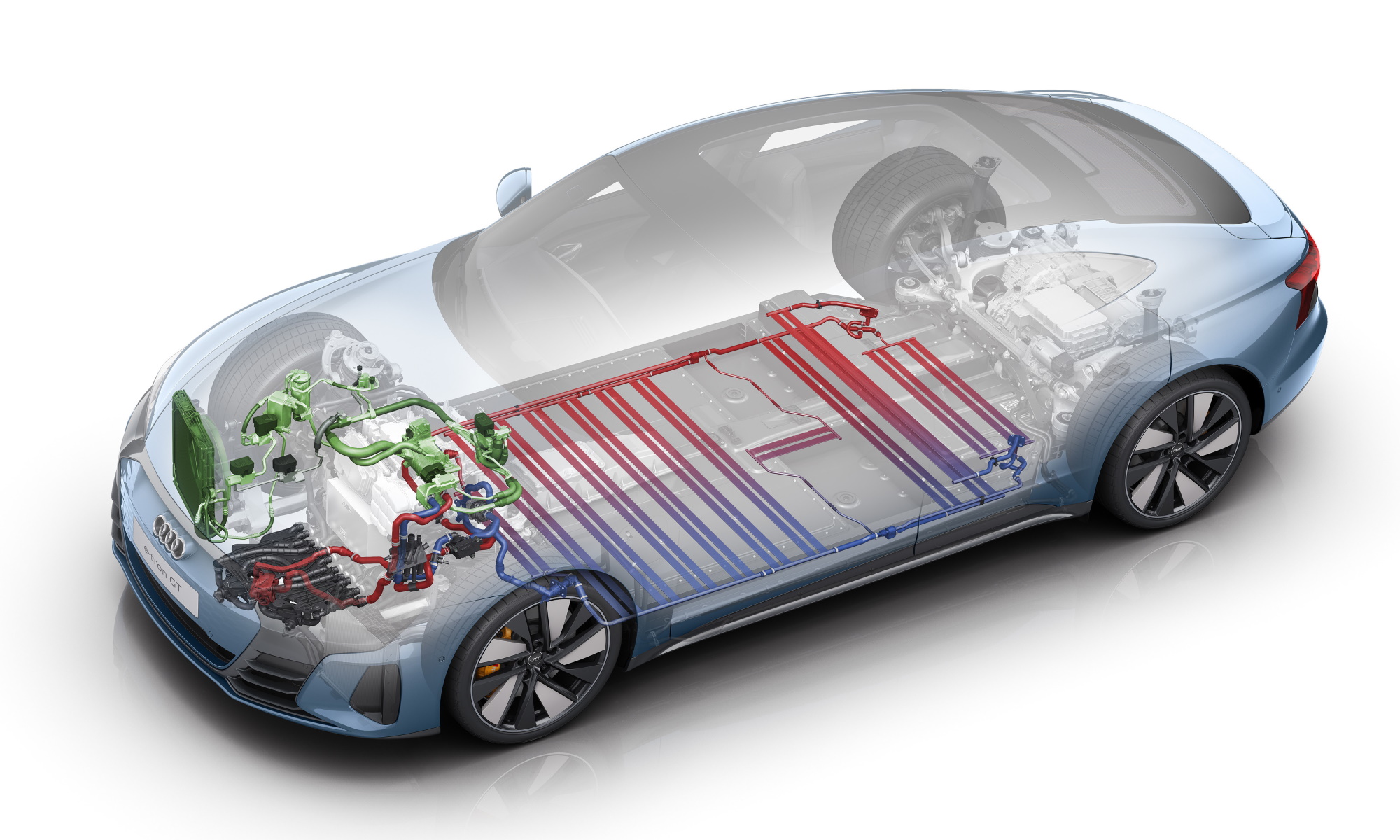
Audi e-tron GT battery cooling circuits
Four separate coolant circuits, each at its own temperature level, regulate the temperature in the high-voltage components and the interior precisely and quickly. They can be interconnected flexibly as required. If the driver demands a high output several times in a row, valves couple the coolant circuit of the battery with the refrigerant circuit of the air-conditioning system – this intensive cooling keeps the performance of the drive at a consistently high level. The e-tron GT quattro and RS e-tron GT can accelerate to full speed from a standstill up to ten consecutive times.
The refrigerant circuit also helps with cooling during fast DC charging, which can heat the battery up to 50 degrees Celsius. The thermal management is connected to the navigation system. When the driver sets an HPC terminal (High Power Charging) as the destination, the cooling of the battery is already intensified on the way to the charging station so that it can be charged as quickly as possible. Should the battery still be very cold shortly after the car is started in winter, it is heated for fast charging.
The standard equipment of the e-tron GT includes a heat pump that heats the interior with the waste heat of the high-voltage components. It can reduce the loss of range that the electric climate control causes in winter in particular significantly. In addition to charging, customers can also manage pre-entry climate control of the interior via their smartphones using the myAudi app. This is done via a powerful high-voltage heating element and does not depend on the car charging via the power grid. Audi equips the e-tron GT with a deluxe auxiliary air-conditioning system as an option that also incorporates the steering wheel rim (if heatable), the exterior mirrors and the rear window.
Reduced power when cold
When battery is cold the car reduces the avaialable power to protect the battery. In cold weather you should try to AC charge before leaving home to increase temprature.
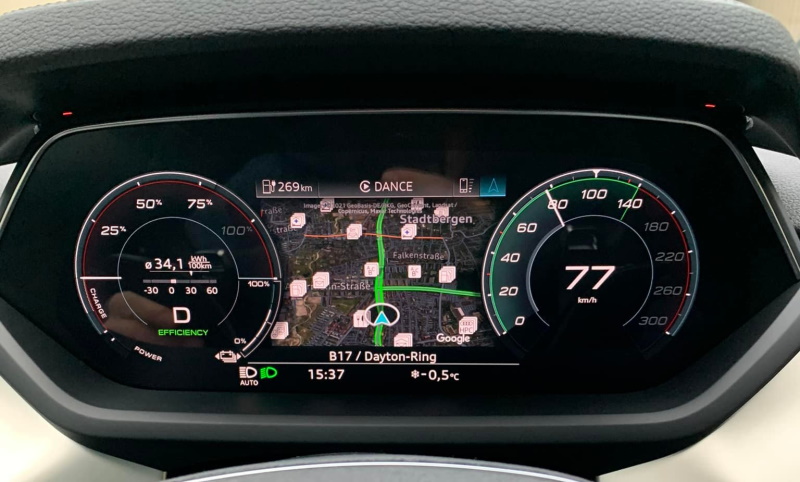
Reduced power avaiable in cold weather
You can read more about how Audi protects the battery in this article.
Charging
The charging flaps of the gran turismo are located behind the front wheels. Both sides feature connections for alternating current (AC) and there is also a connection for direct current (DC) on the right-hand side. The Audi e-tron GT is delivered to its customers with two charging cables as standard: one mode 3 cable for public AC terminals and the charging system compact for the garage. The e-tron GT can charge with 11 kW AC as standard, which allows it to recharge an empty battery overnight. An optional onboard charger for 22 kW is available.
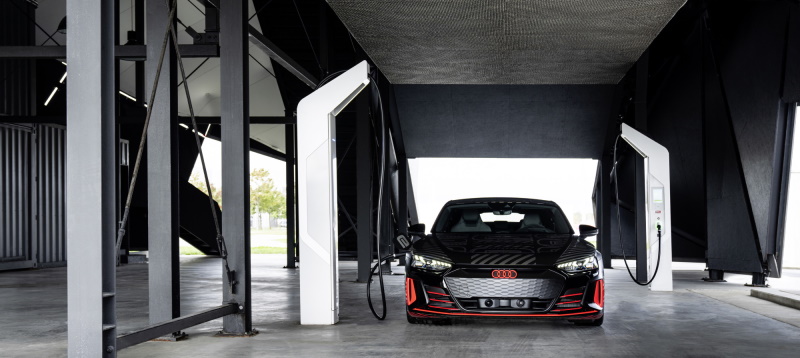
Audi e-tron GT chan charge with up to 270kW
At a direct current terminal with a voltage of 800 V, for example in the European freeway network from Ionity, the Audi e-tron GT achieves a peak charging capacity of up to 270 kW. This allows it to recharge energy for up to 100 kilometers (62.1 mi) in just over five minutes, and charging from five to 80 percent SoC (state of charge) takes less than 22.5 minutes under ideal conditions. The driver can restrict the charging target in the MMI operating system, for example if the rate appears too high.
Audi all-electric models
Click on link for direct access to the different model info for Audi all-electric models